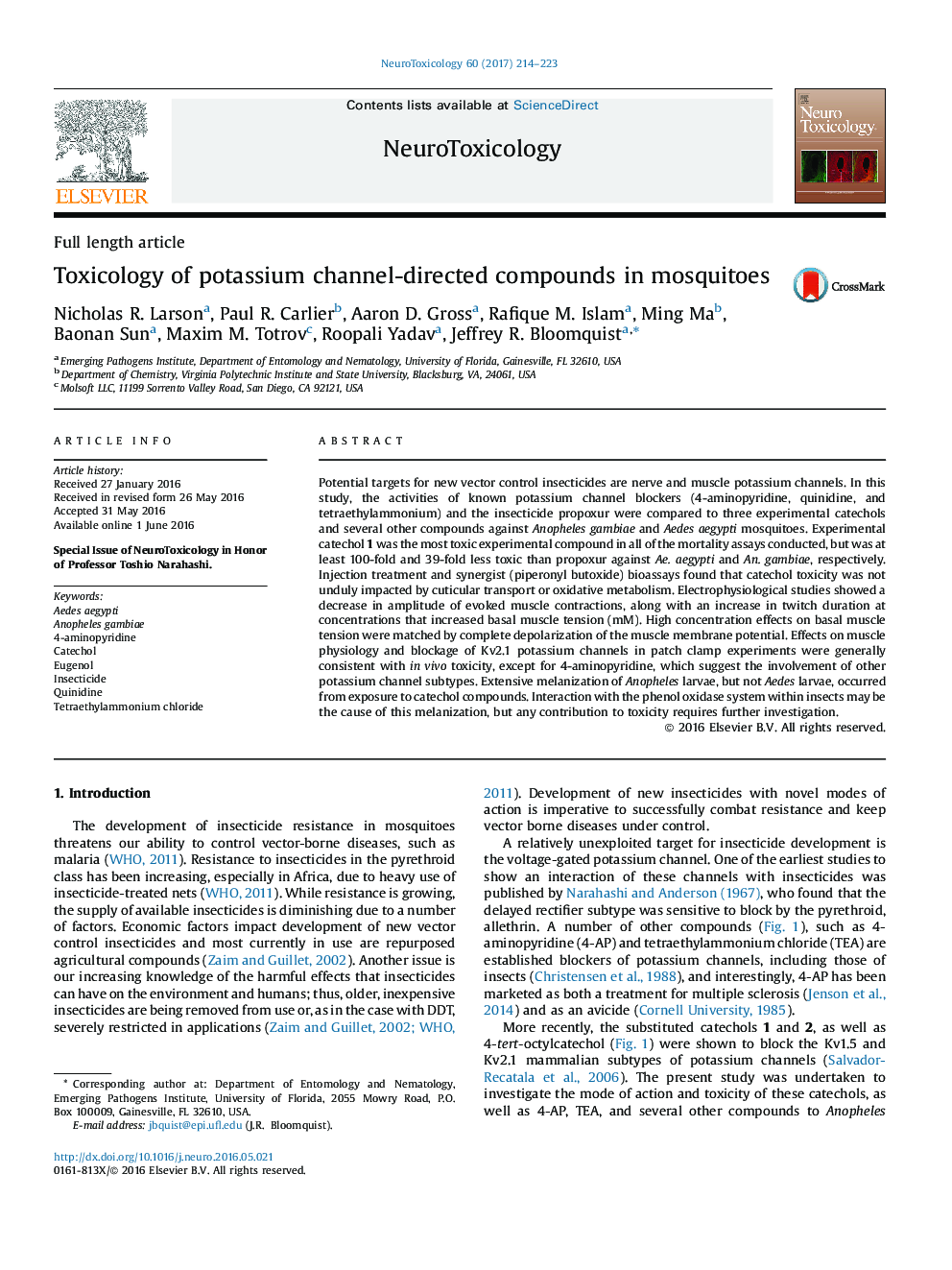| Article ID | Journal | Published Year | Pages | File Type |
|---|---|---|---|---|
| 5560842 | NeuroToxicology | 2017 | 10 Pages |
•Potassium channel blockers were toxic to mosquitoes.•Muscle contraction effects were similar to classical compounds.•Catechols depolarized muscle and blocked Kv2.1 channels.•Catechols also caused melanization in Anopheles gambiae larvae.
Potential targets for new vector control insecticides are nerve and muscle potassium channels. In this study, the activities of known potassium channel blockers (4-aminopyridine, quinidine, and tetraethylammonium) and the insecticide propoxur were compared to three experimental catechols and several other compounds against Anopheles gambiae and Aedes aegypti mosquitoes. Experimental catechol 1 was the most toxic experimental compound in all of the mortality assays conducted, but was at least 100-fold and 39-fold less toxic than propoxur against Ae. aegypti and An. gambiae, respectively. Injection treatment and synergist (piperonyl butoxide) bioassays found that catechol toxicity was not unduly impacted by cuticular transport or oxidative metabolism. Electrophysiological studies showed a decrease in amplitude of evoked muscle contractions, along with an increase in twitch duration at concentrations that increased basal muscle tension (mM). High concentration effects on basal muscle tension were matched by complete depolarization of the muscle membrane potential. Effects on muscle physiology and blockage of Kv2.1 potassium channels in patch clamp experiments were generally consistent with in vivo toxicity, except for 4-aminopyridine, which suggest the involvement of other potassium channel subtypes. Extensive melanization of Anopheles larvae, but not Aedes larvae, occurred from exposure to catechol compounds. Interaction with the phenol oxidase system within insects may be the cause of this melanization, but any contribution to toxicity requires further investigation.
Graphical abstractFigure optionsDownload full-size imageDownload high-quality image (191 K)Download as PowerPoint slide
